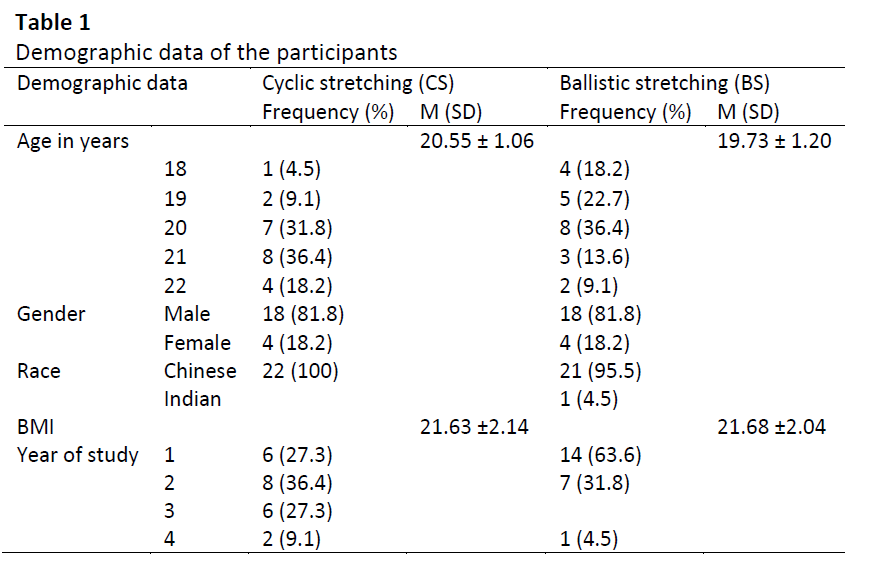Short-Term Effects of Cyclic Vs. Ballistic Stretching on Jumping Distance in Undergraduate Students
DOI:
https://doi.org/10.37934/jhqol.7.1.4048Keywords:
Cyclic stretching, ballistic stretching, jumping distance, undergraduate students, stretching, standing broad jumpAbstract
Standing broad jump distance is a widely used measure to assess leg strength and athletic performance, especially in sports requiring horizontal propulsion. Pre-exercise stretching has been shown to influence power output, a critical component of jumping. This study aimed to compare the effects of lower limb cyclic stretching (CS) and ballistic stretching (BS) on jumping performance, as measured by the standing broad jump test, among undergraduate students. This is a quasi-experimental study that recruited 44 undergraduate students from UTAR, Sungai Long Campus. Participants were randomly assigned to either the CS group or the BS group, with 22 students in each. Both groups performed three specific lower limb stretches targeting the iliopsoas, hamstrings, and gastrocnemius muscles. Each participant completed a pre-test, stretching intervention, and post-test within a single day at the physiotherapy center. The mean age of participants was 20.55 ± 1.06 years in the CS group and 19.73 ± 1.20 years in the BS group. In the CS group, the mean difference (MD) in jumping distance between pre- and post-stretching was −1.22 cm (p > 0.05), while in the BS group, it was −0.06 cm (p > 0.05). No statistically significant difference was observed between the two groups (MD = −1.16 cm, p > 0.05). Neither cyclic stretching nor ballistic stretching of the lower limbs produced a significant improvement in jumping distance among undergraduate students. Furthermore, there was no significant difference between the effects of the two stretching techniques on horizontal jump performance.














